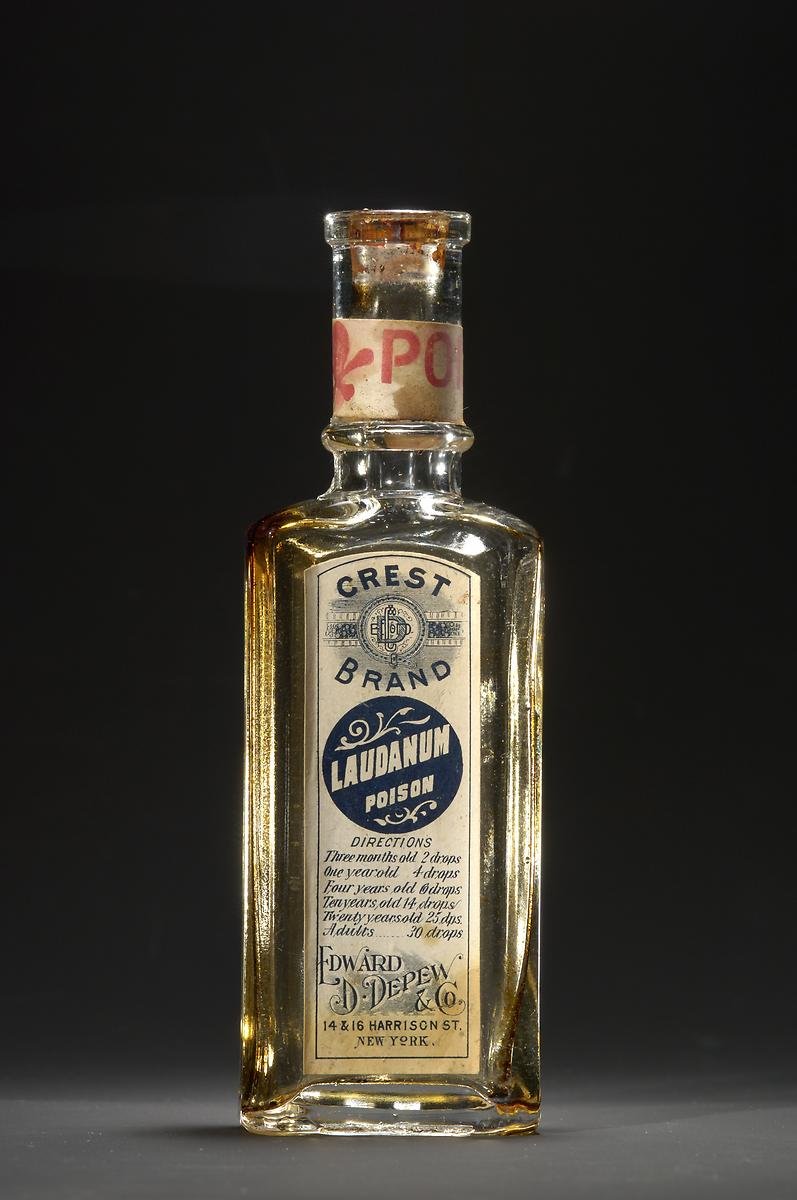
It's Thursday! I hate Thursdays, it's a cruel reminder that it's not yet Friday. To help us feel better, let's look at how the world of nature's poisons can intersect with postmortem forensic toxicology. I present to you LAUDANSOSINE and PAPAVERINE. 

Laudanosine and papaverine are minor alkaloids found in the opium poppy (Papaver somniferum), but they don't get near the attention of the heavy-hitter opiate morphine, which is made (rather simply) into heroin. Other alkaloids found in opium poppy are codeine and thebaine. 

Laudanosine sounds very similar to laudanum, the opium tincture that was common in the 1800s. It was ~10% opium alkaloids, and when drunk, had the same effects of opiates/opioids today, like euphoria, but also the same side effects, namely respiratory depression and dependence. 

Back to laudanosine and papaverine. They don't have opiate activity like morphine. Laudanosine works on GABA, glycine, and nicotinic receptors - it's not very specific. And papaverine is thought to be a phosphodiesterase inhibitor.
In short, no one is looking to use or abuse laudanosine or papaverine. Still, they are present in small amounts in the opium poppy and aren't removed when making heroin, so it's reasonable to think we'd see them in postmortem work, particularly when heroin is involved. And we do.
But what about cases where heroin use is unknown, unlikely, or not considered at all? We can see it there, too.
"Wait a gosh darn minute," you say, "you just told me it comes from opium poppy and is found in heroin."
"Wait a gosh darn minute," you say, "you just told me it comes from opium poppy and is found in heroin."
Let's say I have a case and we found laudanosine and papaverine - again, markers of the opium poppy. You might be tempted to think, it's a massive heroin overdose, but I don't see any morphine, codeine, or 6-acetylmorphine - all found in heroin or its metabolism. What gives?
Laudanosine happens to be a metabolite - a substance formed when the body breaks a drug down (metabolizes) for removal - of atracurium. Atracurium is a neuromuscular blocker used clinically for intubation or during surgery to keep muscles from twitching. 

So if someone is given atracurium in the hospital and they don't survive, this is why I might see laudanosine - as a metabolite of atracurium - and it have nothing to do with poppies or heroin. So what about papaverine?
Let's take that same decedent. If they were organ donors (you all should be, by the way, it literally gives life to people), papaverine may have been used prior to organ and valve harvest. It is a vasodilator (opens blood vessels) and can enhance blood flow when regrafted.
Papaverine has clinical uses, too, centered around vasodilation and increasing blood flow. Papaverine can also produce erections in men. What?! You know what else is a phosphodiesterase inhibitor like papaverine? Viagra.
You do enough postmortem toxicology and you'll see cases just like this. I have. This is a reminder to look at the whole picture - my old boss and mentor always said "toxicology doesn't exist in a vacuum" - and look at the history and clinical information to reduce your biases.
So that's the story of laudanosine and papaverine, both alkaloids found in opium poppy, and instances in which you might find them in cases that have nothing to do with opium. Keep your head up people, the weekend is almost here. 

BONUS: If laudanum sounded familiar to you, Wyatt Earp's wife, Mattie Blaylock, was a heavy user of laudanum. It was depicted in the movie TOMBSTONE (the one with Kurt Russell and Val Kilmer). She eventually died from a laudanum overdose and her death was ruled a suicide.
• • •
Missing some Tweet in this thread? You can try to
force a refresh
















